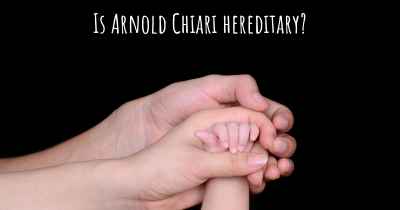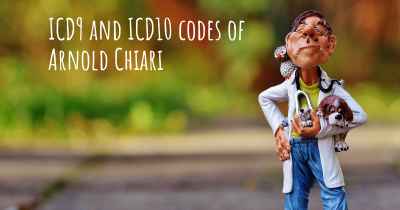What are the latest advances in Arnold Chiari?
Here you can see the latest advances and discoveries made regarding Arnold Chiari.

Arnold Chiari malformation is a neurological disorder characterized by structural defects in the cerebellum, the part of the brain that controls balance and coordination. This condition is named after the Austrian pathologist Hans Chiari, who first described it in the late 19th century. Arnold Chiari malformation is classified into four types, with type I being the most common.
Type I Arnold Chiari malformation is characterized by the downward displacement of the cerebellar tonsils through the opening at the base of the skull called the foramen magnum. This displacement can cause compression of the brainstem and spinal cord, leading to a variety of symptoms such as headaches, neck pain, dizziness, difficulty swallowing, and coordination problems.
Recent advances in the understanding and treatment of Arnold Chiari malformation have focused on several key areas:
Improved Imaging Techniques:
Advancements in medical imaging, particularly magnetic resonance imaging (MRI), have greatly enhanced the diagnosis and evaluation of Arnold Chiari malformation. High-resolution MRI allows for detailed visualization of the brain and spinal cord, aiding in the identification and classification of the malformation. These imaging techniques also help in assessing the severity of the condition and guiding treatment decisions.
Genetic and Molecular Studies:
Researchers have been investigating the genetic and molecular factors that contribute to the development of Arnold Chiari malformation. Several genes have been identified as potential risk factors, and ongoing studies aim to unravel the complex genetic mechanisms involved. Understanding the underlying genetic basis of the condition may lead to improved diagnostic tools and targeted therapies in the future.
Advancements in Surgical Techniques:
Surgery is often the primary treatment for symptomatic Arnold Chiari malformation. Traditional surgical approaches involve decompression of the posterior fossa, where the cerebellum is located, to relieve pressure on the brainstem and spinal cord. However, recent advancements in surgical techniques have focused on refining and individualizing the procedures to achieve better outcomes.
Minimally invasive techniques have gained popularity in the surgical management of Arnold Chiari malformation. These approaches involve smaller incisions, reduced tissue disruption, and shorter recovery times compared to traditional open surgeries. Minimally invasive techniques may include endoscopic-assisted procedures or the use of specialized instruments to perform the decompression.
Image-guided navigation systems have also revolutionized the surgical treatment of Arnold Chiari malformation. These systems use preoperative imaging data to create a three-dimensional map of the patient's anatomy, allowing surgeons to navigate with precision during the procedure. This technology enhances the accuracy of surgical interventions and reduces the risk of complications.
Non-Surgical Management:
While surgery remains the primary treatment for symptomatic cases, non-surgical management options have also advanced in recent years. Physical therapy and rehabilitation programs can help improve balance, coordination, and muscle strength in individuals with Arnold Chiari malformation. Pain management techniques, such as medications and nerve blocks, may also be employed to alleviate symptoms.
Ongoing Research:
Researchers continue to investigate the underlying mechanisms and risk factors associated with Arnold Chiari malformation. This includes studying the role of genetics, prenatal factors, and environmental influences. Additionally, clinical trials are being conducted to evaluate the effectiveness of novel treatment approaches, such as targeted drug therapies and gene therapies.
In conclusion, recent advances in Arnold Chiari malformation have focused on improved imaging techniques, genetic and molecular studies, advancements in surgical techniques, non-surgical management options, and ongoing research. These advancements aim to enhance diagnosis, refine surgical interventions, and develop targeted therapies for individuals affected by this neurological disorder.
Posted Jul 23, 2017 by Erena 2000
Posted Aug 30, 2017 by Michelle 2000
Posted May 27, 2018 by xyzmike1 3050
Posted Nov 29, 2019 by TRIPLE-1 CHIARI 2500
Posted Aug 30, 2017 by Candelaria 6560
The research consists of:
Efforts to identify the genes responsible for the malformation, investigating subjects with Chiari who have a family member affected with the same disease or syringomyelia.
The search for surgical methods with alternative non-invasive to the syringomyelia, which consist in attaining to correct the abnormal flow of CSF without cutting the cord itself.
Comparison between the prenatal surgery of myelomeningocele and conventional methods postnatal. Participating in this study 200 pregnant women whose fetuses have spina bifida. Some children will be operated in uterus and other as per the usual procedure. The clinical evidence preliminary suggests that surgical closure of an intrauterine of the myelomeningoceles drastically reduces the dependence of valves after the birth, and that restores the cerebellum and brainstem to configurations much more normal.6 children operated will be evaluated and compared to one year and two and a half years after the operation to verify the motor function, the evolutionary progress and the development of bladder, kidneys, and brain.
Posted Oct 11, 2017 by Lynda Estrada 6835
Posted Nov 2, 2017 by Pochi 2050
Posted Nov 22, 2017 by Vanesa 1550








